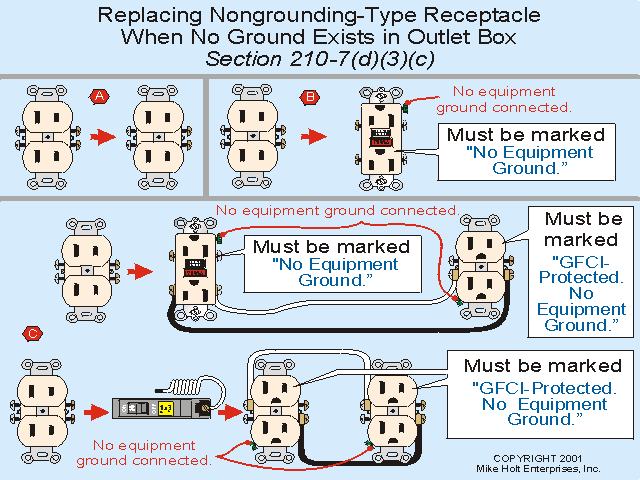Metal Water Pipes in Detail
- Is a metal water pipe a primary grounding electrode, and others secondary?
An electrode is an electrode. Some perform better than others, but the NEC takes a basic stance that all present shall be used, and the order does not matter.
250.64(F) says that a GEC can run to any convenient electrode, and then "daisy-chain" from electrode to electrode if we like. The GEC for some electrodes is not required to be larger than a certain size, like #6 for a ground rod. If you were to pull a GEC to the ground rod first, then run a bonding jumper from the ground rod to a water pipe, then you would be forced to pull a larger-than-6 conductor to the ground rod due to the sequence of electrodes pulled to.
The water pipe needs a full sized GEC all the way back to the service. Therefore, it's a little counterintuitive to run to a ground rod first.
We can also pull GECs to each grounding electrode if we prefer.
- Are we required to install ground rods when a metal water pipe is present?
Not exactly. A metal water pipe grounding electrode is required to be supplemented by another electrode (250.53(D)(2)). If there is a concrete-encased electrode and a water pipe in the same structure, then no additional grounding electrodes are necessary.
If a metal water pipe grounding electrode is the sole electrode at the structure, then it must be supplemented somehow, and the easiest is a ground rod.
- Are two ground rods required to augment a metal water pipe?
If a ground rod is driven to augment a water pipe, and the single ground rod's resistance to ground is greater than 25 ohms, then a second is to be driven, according to 250.53(D)(2).
If you can't afford expensive testing equipment, you can drive a second rod and walk away regardless of the resistance of the system.
The NEC does not have any requirement for the overall resistance of a system. It only has a rule that states that a single ground rod must be augmented if it's resistance is over 25 ohms. Proposals to eliminate this requirement, or to increase the requirement have both been rejected.
- What if the water pipe is replaced for plastic later?
That's why we supplemented it with ground rods (or other electrodes) - by the nature of it's use, it's vulnerable to changes later in it's life, unlike the other electrodes.
- If the water pipe entering the building is plastic, and the water pipes inside the building are metallic, do the metallic water lines require grounding?
No, but they do require
bonding. See 250.104(A).
The bonding conductor does not have to be to any specific area of the water piping (as opposed to the
metal water pipe grounding electrode described in 250.52(A)(1), which has to be connected to within 5' of the entrance to the building).
- Does this mean that all metal water piping in a structure has to be bonded, per 250.104?
All metal water piping
systems are required to be bonded. Therefore, plastic piping with metallic fittings do not require bonding per the NEC.
- Does this mean that I have to bond around a water heater - isn't there a hot system and a cold system?
This is not clear in the NEC. One thing that is indisputable (in my opinion) is that if there are metallic mixing valves at the sinks and/or tubs, then the piping is electrically continuous.
Click here to see a discussion on the topic, which was never resolved, IMO. It may help you to form your own opinion. Essentially, the debate was what constituted a "system", and what may go legally unbonded by the NEC. According to a panel statement that Mike Whitt (jwelectric) found, the hot water pipes would need to be bonded only if likely to become energized, by 250.104
(B).







